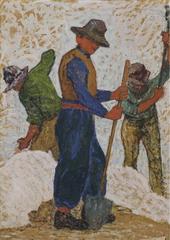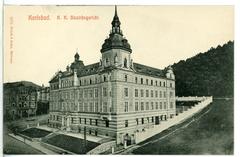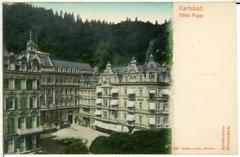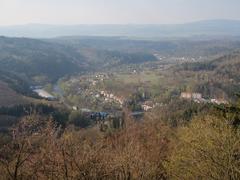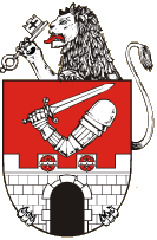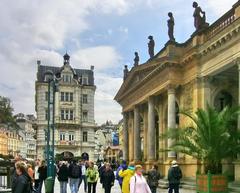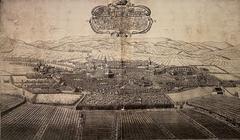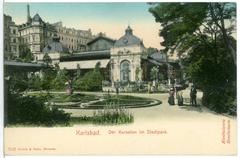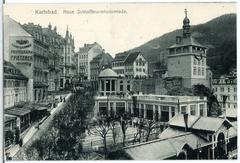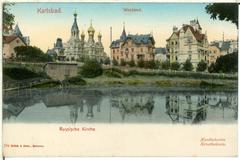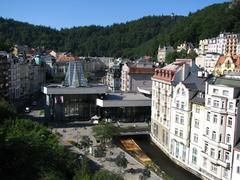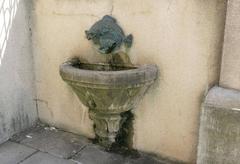
Bedřich Smetana Monument Karlovy Vary: Visiting Hours, Tickets, and Historical Significance
Date: 04/07/2025
Introduction
The Bedřich Smetana Monument in Karlovy Vary stands as a profound tribute to one of the Czech Republic’s most celebrated composers and cultural icons. Nestled in the peaceful Smetana Park near the historic Poštovní dvůr (Postal Court), the monument offers a unique blend of artistry, history, and tranquil green space. This comprehensive guide covers the monument’s origins, cultural significance, artistic features, visiting hours, accessibility, travel tips, and nearby attractions, helping you plan a meaningful visit to this essential Karlovy Vary landmark (Karlovy Vary official site, pamatkyaprirodakarlovarska.cz).
Table of Contents
- Origins and Historical Development
- Bedřich Smetana: National Icon and Cultural Legacy
- Artistic Features and Design
- Heritage Status and Cultural Significance
- Visiting the Monument: Practical Information
- Nearby Attractions
- Frequently Asked Questions (FAQ)
- Conclusion and Call to Action
- References
Origins and Historical Development
The inception of the Bedřich Smetana Monument is rooted in the vibrant cultural revival of interwar Czechoslovakia. Following a landmark 1933 concert at the Poštovní dvůr featuring exclusively Czech composers, a movement began to honor Smetana in Karlovy Vary. By 1934, the “Free Association for the Construction of the Bedřich Smetana Monument” was established, bringing together prominent figures such as Josef Bohuslav Foerster and Gabriela Horvátová. Through community fundraising and public concerts, nearly the entire project sum was raised by 1938.
World War II delayed construction, but after the war, renewed efforts—supported by the Ministry of Information and local authorities—ensured that the monument was finally realized. The foundation stone was laid in 1947, and the monument was unveiled in 1950 during the Smetana Music May festival, attended by hundreds of locals and spa guests (pamatkyaprirodakarlovarska.cz).
Bedřich Smetana: National Icon and Cultural Legacy
Bedřich Smetana (1824–1884) is widely recognized as the father of Czech national music. His compositions, including the renowned cycle “Má vlast” (My Homeland), are deeply woven into the fabric of Czech identity and history. The decision to honor Smetana in Karlovy Vary reflects the city’s pride in its cultural heritage and its ongoing celebration of Czech artistic achievement (Karlovy Vary official site).
Artistic Features and Design
Sculptural Concept
A public competition led to the selection of sculptor Josef Wagner and architect Alois Wachsmann’s design. After Wachsmann’s passing, architect Pavel Smetana oversaw the architectural completion. The bronze statue, cast by K. Barták of Prague, depicts Smetana in a contemplative, seated pose—an intimate portrayal that resonates with the tranquil park setting.
The thoughtful expression and naturalistic rendering evoke a sense of creative introspection, inviting visitors to reflect on Smetana’s impact while enjoying the beauty of Smetana Park. The monument’s placement near the Poštovní dvůr is a nod to the site of the pivotal 1933 concert that inspired its creation (pamatkyaprirodakarlovarska.cz).
Heritage Status and Cultural Significance
The monument is officially protected as an architectural landmark in the Karlovy Vary region. Its unveiling in 1950 was a significant cultural event, symbolizing not only the resilience of Czech culture after the war but also the city’s commitment to celebrating its musical heritage. The monument is a frequent site for commemorative events and classical music performances, especially those featuring Smetana’s works (pamatkyaprirodakarlovarska.cz).
Visiting the Monument: Practical Information
Location and Directions
The Bedřich Smetana Monument is located within Sady u Poštovního dvora (Gardens by the Postal Court) in the southern part of Karlovy Vary. The GPS coordinates are 50°12’58.196”N, 12°53’20.922”E (pamatkyaprirodakarlovarska.cz).
- On Foot: From the city center and Hot Spring Colonnade, it’s a scenic 1.5 km walk upstream along the Teplá River, passing the Grandhotel Pupp and following Goethe’s Path.
- By Public Transport: Take Bus No. 2 or No. 7 from “Tržnice” to the “Richmond” stop, then walk 100 meters through the park (Karlovy Vary Official).
- By Car: Parking is available near Poštovní dvůr, but may be limited during peak seasons (thecrazytourist).
Visiting Hours and Tickets
- Hours: Open 24 hours a day, year-round.
- Admission: Free of charge. No ticket is required.
Accessibility
- Paved, mostly flat paths provide good access for wheelchair users and families with strollers.
- Benches are available for resting.
- Some paths may be uneven; visitors with mobility concerns may prefer public transport.
- Accessible toilets are available at Poštovní dvůr and nearby spa colonnades (karlovyvary.cz).
Guided Tours and Visitor Experience
- The monument is included in many comprehensive walking tours of Karlovy Vary’s historical and cultural sites.
- Tours can be arranged through the Karlovy Vary Tourist Information Centre, which also offers maps, brochures, and up-to-date event information.
Travel Tips
- Best Time to Visit: Late spring to early autumn offers pleasant weather and lush park scenery.
- Photography: Morning and late afternoon light is ideal for photos.
- Languages: Czech is primary, but English and German are widely spoken in tourist areas.
- Amenities: Cafés and restaurants are within a short walk; restrooms are accessible at Poštovní dvůr.
Nearby Attractions
- Poštovní dvůr (Postal Court): Historic concert venue.
- Elisabeth Baths: Architectural gem adjacent to Smetana Park (Karlovy Vary official site).
- Mill Colonnade: Iconic neoclassical spa promenade (thecrazytourist).
- Grandhotel Pupp: Legendary hotel and symbol of the city (LaidBackTrip).
- Goethe’s Path: Historic walking route.
- Becherovka Museum: Learn about the famous Czech herbal liqueur (touristplaces.guide).
- Diana Tower Lookout: For panoramic city views.
Frequently Asked Questions (FAQ)
Q: What are the visiting hours for the Bedřich Smetana Monument?
A: The monument is accessible 24/7, year-round.
Q: Is there an entrance fee to visit the monument?
A: No, visiting is free of charge.
Q: Is the monument accessible for visitors with disabilities?
A: Yes, paved paths provide good access, though some areas may be uneven.
Q: Are guided tours available?
A: Yes, the monument is included in many city walking tours. Check with the Tourist Information Centre for current offerings.
Q: Can I take photographs at the monument?
A: Absolutely—photography is encouraged. Please respect the site and do not climb on the statue.
Q: Where are the nearest restrooms?
A: At Poštovní dvůr and in the city center.
Conclusion and Call to Action
The Bedřich Smetana Monument is more than a statue—it is a testament to Czech national pride, artistic achievement, and the enduring influence of a musical giant. Set amidst serene parkland and surrounded by architectural and cultural treasures, the monument offers a rewarding stop for music lovers, history enthusiasts, and travelers alike. Its year-round, free accessibility, and proximity to other attractions make it easy to incorporate into any Karlovy Vary itinerary.
Enhance your visit by joining a guided tour, attending a concert at Poštovní dvůr, or exploring the city’s famous spa culture. For the most current information, downloadable maps, and self-guided audio tours, download the Audiala app and follow Karlovy Vary’s official channels.
Plan your visit today and experience the harmony of art, history, and nature in the heart of Karlovy Vary.
References
- Karlovy Vary official site
- pamatkyaprirodakarlovarska.cz
- Karlovy Vary official site: Monuments and Memorials
- Karlovy Vary Official - Bedřich Smetana’s Monument
- The Crazy Tourist
- TouristPlaces Guide
- Visit Czechia
- Audiala app
- LaidBackTrip
- The Tourist Checklist
- Wedrinkeattravel
- Czech Wiki


